August 28, 2019
Learning about Cars in Nagoya
"Participating in the six-week summer program at Nagoya University, I got a good mix of both automotive engineering and cultural experience. Japan is a place I definitely recommend visiting if you have never been there, I want to go back sometime for sure."
This is what Ashwin Krishna, third-year student at the University of Michigan College of Engineering, reported in a letter last summer. Ashwin never fulfilled his dream of returning to Japan, however, as he passed away two months later.
He also wrote that he did so many things with his classmates from 12 different countries that it's hard to sum up concisely, like how they attended lectures by university and corporate experts on future auto technology, how they even got to see autonomous cars at Meidai, how interesting he found production system like the robotic operations at factories of Toyota, Suzuki and so on and especially "just-in-time manufacturing" practice at Toyota, and how the group visited cities like Kyoto, Nara, and Tokyo. As a summary of his impression of Japan, he wrote, "I've never seen a place as clean, efficient, and advanced as Japan. It was amazing how high quality everything there was and how nice people were everywhere."
Ashwin returned home with a pile of photos, his favorite Japanese snacks and other gifts, and told his family, including father Arvind, about his experiences. In June of this year, in his letter to Meidai reporting the news of his son, Arvind proposed creating a scholarship in Ashwin's name as one of the most memorable events of life of Ashwin's, who had been extremely interested in cars since childhood, was the wonderful time he spent at Nagoya University and other parts of Japan. Starting next summer, the scholarship will be awarded to a University of Michigan student participating in the program.
Ashwin took part in the Nagoya University Summer Intensive Program: Latest Advanced Technology & Tasks in Automobile Engineering (NUSIP). Designated Professor Yukio Ishida, who has administered the program since its establishment in 2008, mourned the untimely death of a young man he remembers being so full of life. Yet Arvind's letter explaining their family's sincere appreciation for the happiness and enrichment provided to Ashwin put Ishida's mind at ease, as he believes, "the program is now something appreciated both by the participants and their family."
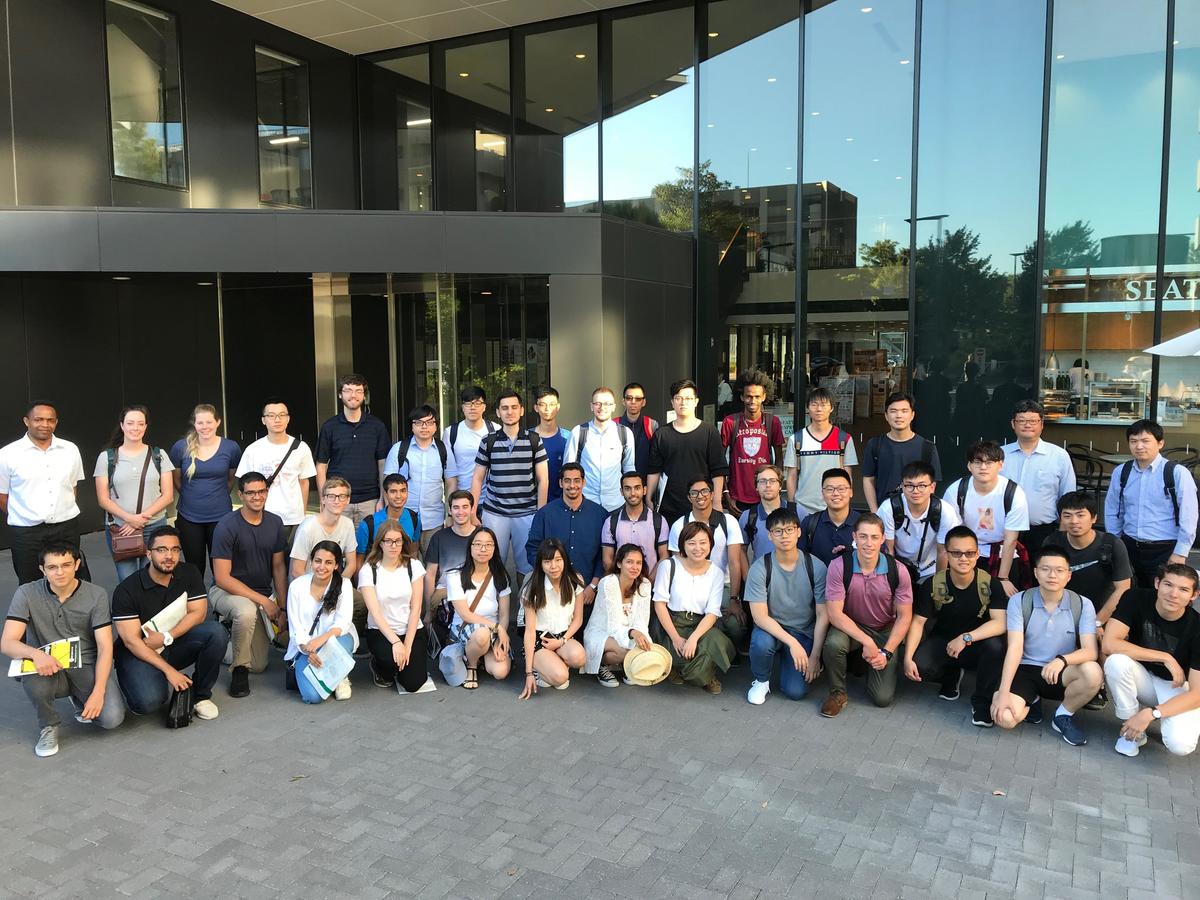 The 2018 NUSIP program was full of international diversity, with 42 participants from 12 countries
The 2018 NUSIP program was full of international diversity, with 42 participants from 12 countries
"Students hear about cutting-edge developments, not only from the university but also from industry experts, and can visit highly-autonomous factories and leading research institutions. There's just no other program like NUSIP," explains Ishida. Even though costs for things like tuition and flights total around 500,000 yen and must be paid for by students themselves, the program receives a large number of applications from all over the world for only 40 sought-after positions.
The beginning was a letter to Meidai from the University of Michigan College of Engineering in 2005. The two universities have had a partnership since 1980, but the letter said "We don't really have an exchange, as in most cases Meidai students are coming to Michigan, not the other way around. We want to send Michigan students to Meidai." To do so, lectures needed to be offered in English. More importantly, they needed a program that would attract students from the University of Michigan, one of the top schools in the US. The theme of automobiles was brought up by the School of Engineering -- or rather, they concluded that this was the only possible theme for a program that didn't exist abroad and would be interesting for students.
The Tokai region has the advantage of being home to Toyota and other top auto and auto-related companies, and their relationship with Meidai is strong because so many graduates move on to prosper in these firms. Automotive technology spans a wide gamut from materials to computers, and is actually a form of comprehensive engineering. And above all, in the nearly 100 years since Ford's Model T debuted in 1908, auto technology had continued to go through an era of immense transformation. At that time, the hybrid engine developed by Toyota had gained attention, and electric cars had begun to launch. So the timing was also right.
They needed to create a program that leveraged this regional advantage, that was suited to an era of revolution, and that was like no other in the world. A mechanical engineering professor at the time, Ishida set those objectives and formulated the six-week summer program over the space of two years. To get technicians from companies to speak as frankly as possible he set rules to respect company secrecy, like not distributing lecture materials as digital files.
At first participation in the program was limited to students from Michigan and other Meidai partner schools, but later opened to other schools.
The scholarship in Ashwin's name is awarded to the University of Michigan student with the highest grades out of those who participate in the program. Started through a partnership with Michigan, NUSIP symbolically shows how it has become a program that international students want to join.
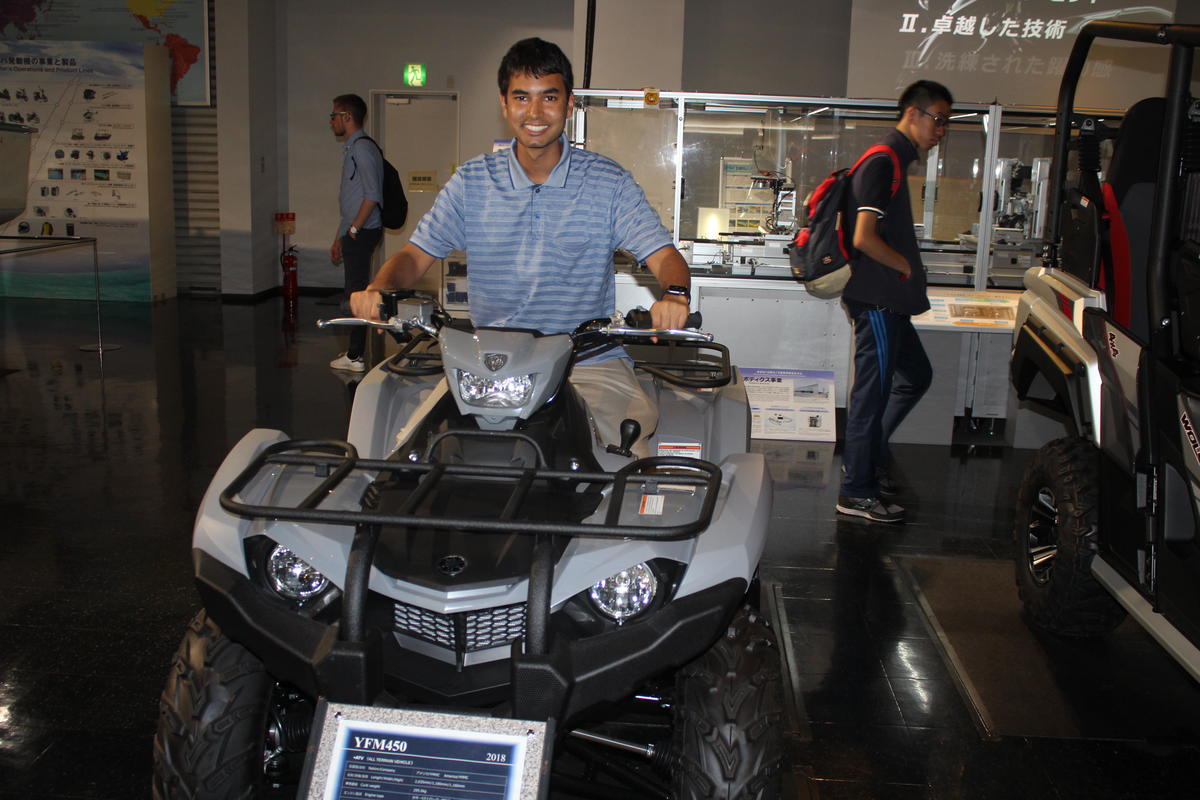 Ashwin Krishna enjoying his visit to a company
Ashwin Krishna enjoying his visit to a company
One would expect that a program international students find appealing would also be attractive to Japanese students. The program has 10 spaces set aside for Meidai students, who can participate for free, but hardly any Japanese students join. It appears the obstacle is that all the lectures and presentations are in English.
In light of this, the one-year Advanced Mobility Studies Program for graduate students was founded in 2018 as a kind of "Japanese version" of NUSIP. In addition to learning about everything from the basics of automotive technology to the forefront of electric and intelligent cars, the final semester includes various types of practical training that NUSIP doesn't. Students can even design and manufacture an electric car as part of the Meidai student formula team. The team is a veteran champion, having won the Formula SAE Japan competition's electric car division three times in a row with their hand-built formula cars. Through cooperation with Toyota, students can also visit research institutes and production lines, as well as attend discussions with heads of development. The program is very popular with students, and after starting with about a dozen participants, the number has doubled in the second year.
"We want students to not simply acquire knowledge, but to use their own hands to learn and think about automobiles as a system," says Tatsuya Suzuki, professor at the Graduate School of Engineering Department of Mechanical Systems Engineering, and director of the Global Research Institute for Mobility in Society.
Even Global 30, an international program founded in 2011 where students can earn their degree in English, established an automotive engineering course based on the success of NUSIP. It is now their most popular program. Meidai has even become internationally known as the Mecca for automotive engineering.
These kinds of popular programs for international students have at last been created for Japanese students. There's no reason not to afford Japanese students the opportunities that students from abroad compete for. The region has an inherent advantage, and there is an abundance of research. One could say that those looking in from the outside are the ones who helped Meidai recognize its own appeal.
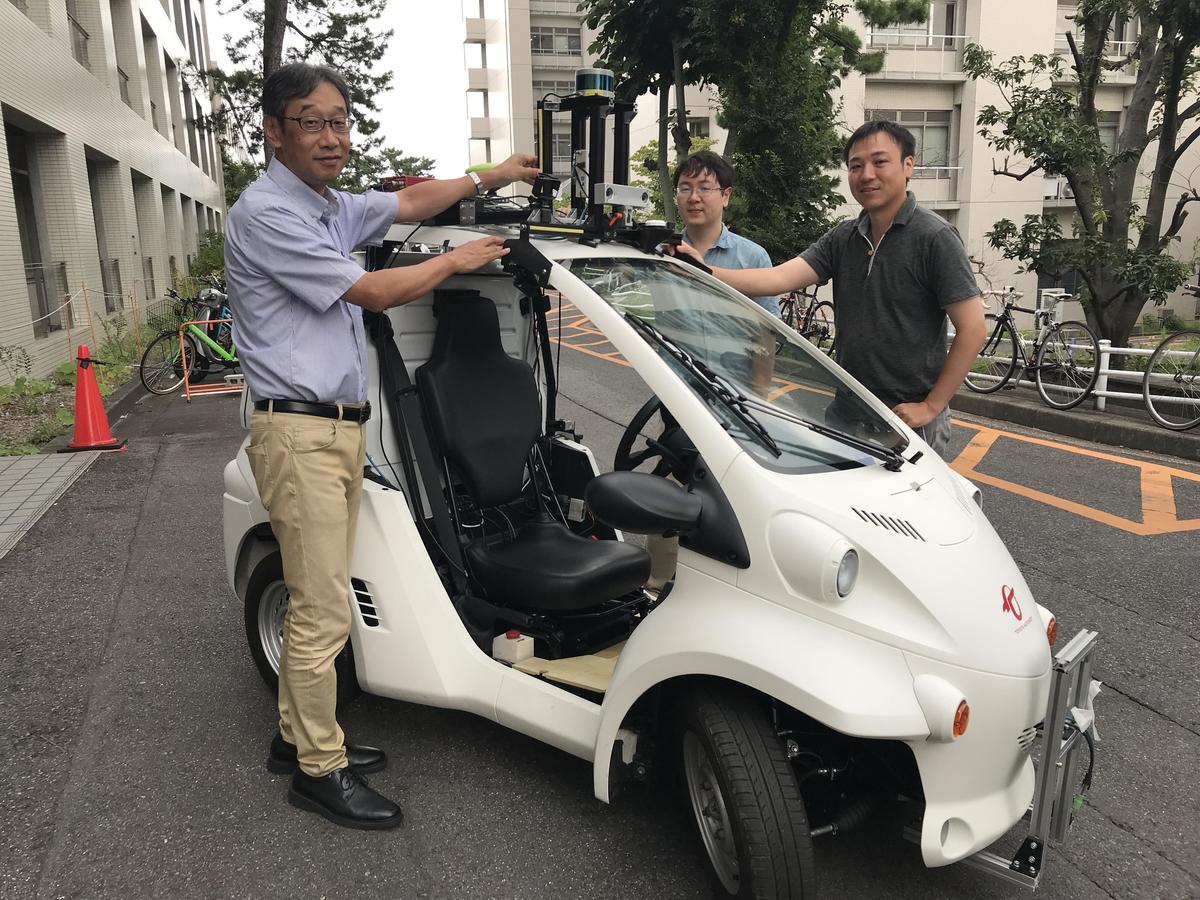 Professor Tatsuya Suzuki (left) and an electric autonomous vehicle being researched
Professor Tatsuya Suzuki (left) and an electric autonomous vehicle being researched
So what kind of auto-related research is happening at Meidai?
One recent example is a piece of equipment that alerts elderly drivers to potential mix-ups of the accelerator and brake pedals. It garnered attention this past spring in Japan after a series of reports on reckless driving accidents involving seniors, and was researched by a project whose goal is to "empower an aging society through advanced mobility" as part of supporting safe and secure driving for the elderly.
The research was driven by Designate Professor Hirofumi Aoki of Meidai's Institute of Innovation for Future Society, who says that behind it is an abundance of data on elderly driving characteristics. To get this data, they introduced the world's first immersion-style driving simulator that uses 4K video to produce a virtual reality. Wearing glasses and sitting in the driver's seat provides the sense of actually driving in a road environment. The movement of the car is also replicated. Researchers created various situations to see how drivers would react, examined viewpoint movement and response speed, and also analyzed fatigue, stress, and other physical conditions. With the help of around 400 volunteers, over five years they were able to examine the relationship between physical capacity and driving of elderly people.
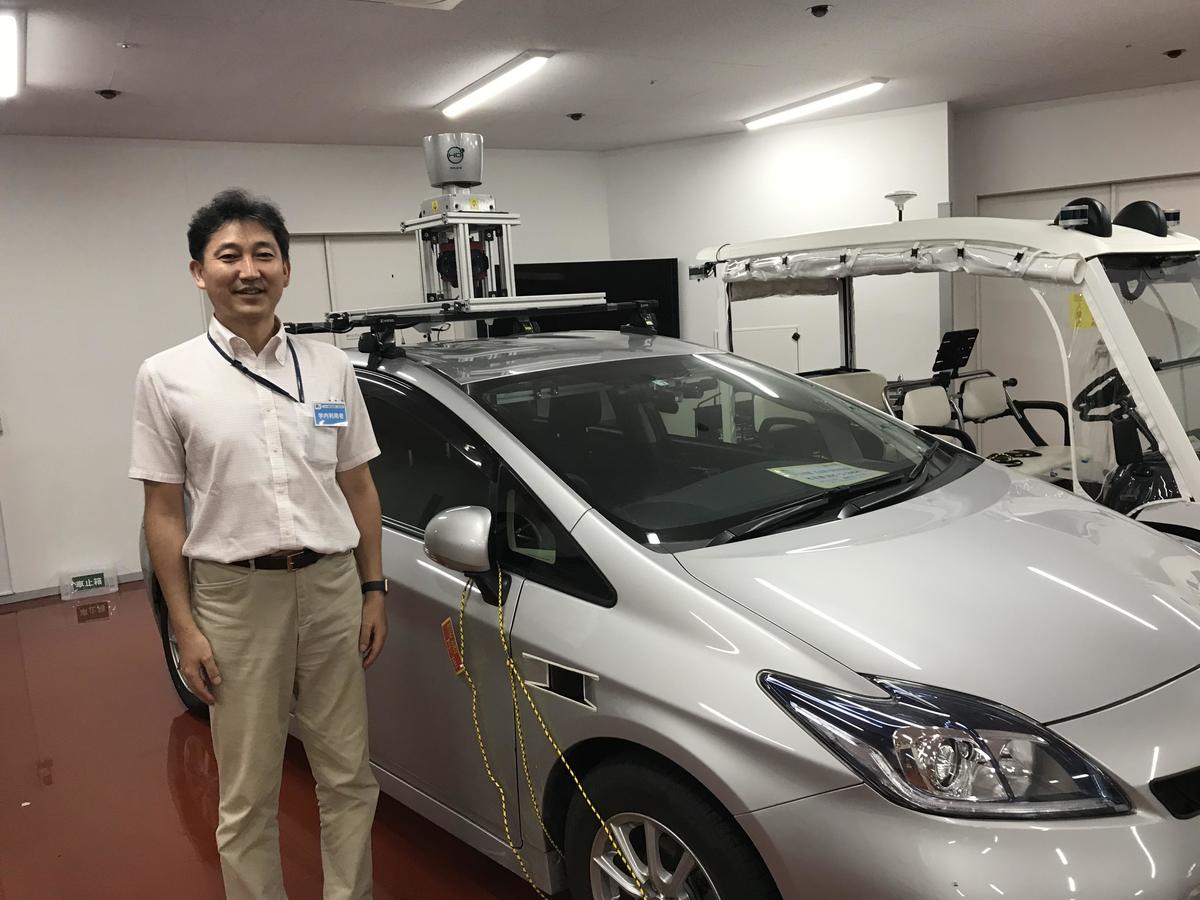 Designate Professor Hirofumi Aoki next to the experimental car
Designate Professor Hirofumi Aoki next to the experimental car
Based on this data, they also devised a way to reduce the occurrence of pedal mix-ups that tend to occur in elderly drivers. The equipment was developed bearing cost in mind, and releases a warning sound along with the display asking the driver to take their foot off the accelerator. Fuel is blocked at the same time. They have acquired data that indicates the warning sound actually shortens the driver's response time in moving ones foot from the accelerator to the brake. Through co-development with Denso, the device was turned into a product last December.
Aoki was originally interested in manned spacecraft development, and worked on developing space station systems suited to astronauts at the Massachusetts Institute of Technology (MIT). After returning to Japan, he spent six years at Toyota developing automated stopping systems for cars, and then moved to Meidai in 2013. From spaceships to cars -- vehicles that seem quite different, yet both involve systems created based on sufficient understanding of humans.
Speaking of car research at Meidai, however, the thing that is likely most renowned now is automated driving. Basic automated driving software developed at Meidai is being used around the world, and it's widely known along with the Meidai venture Tier IV that develops automated driving systems using it as a base.
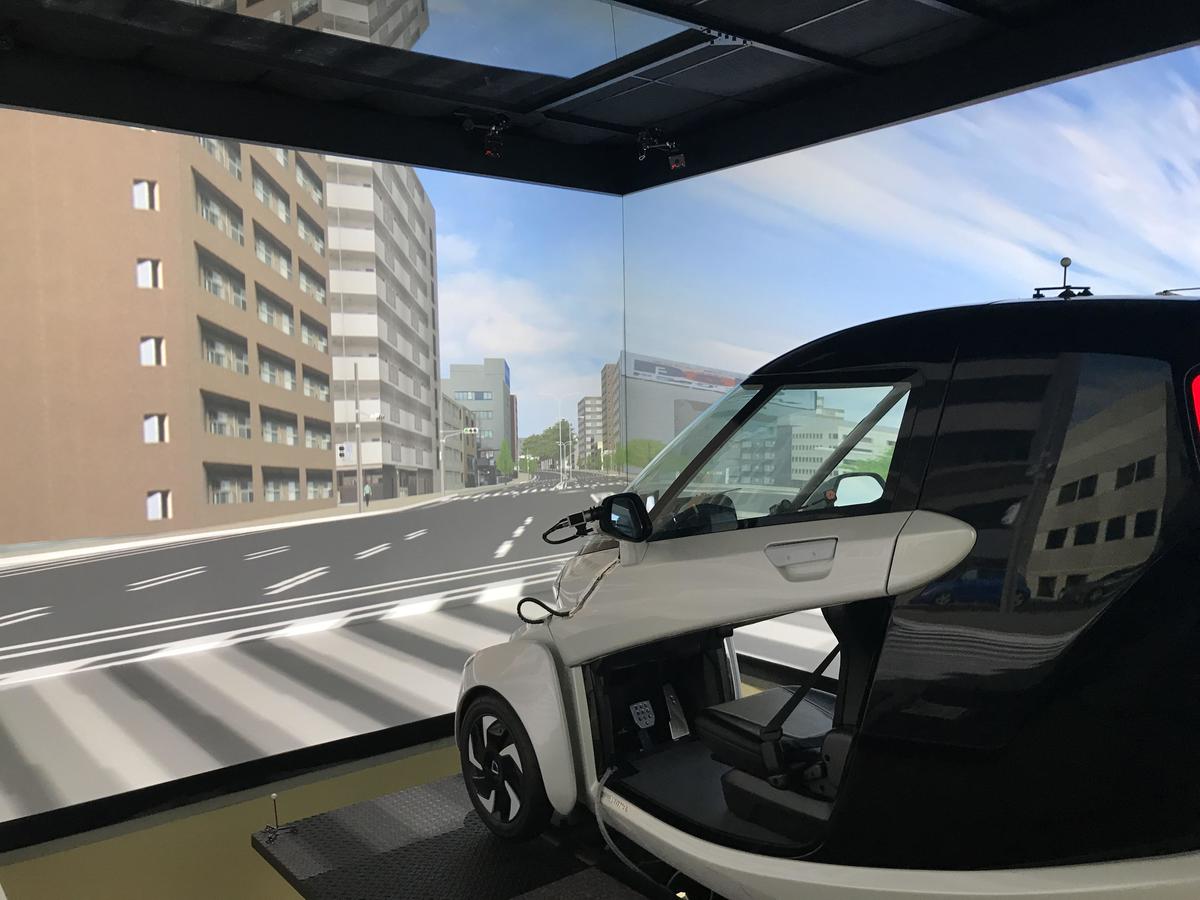 The immersive simulator, which creates a sense of actually driving
The immersive simulator, which creates a sense of actually driving
The Institute of Innovation for Future Society was founded in April of this year to summarize and expand on the research done up till now. It sets forth the vision of "human-centric mobility" -- mobility technology focused on humans -- and does research focusing on everything from autonomous driving and the cars themselves to the societal systems involved. Participating researchers come from a wide variety of disciplines, from engineering to humanities and the social sciences. Suzuki, who drove creation of the Advanced Mobility Studies Program, heads the institute, while Aoki is manager of the Strategic Planning Office.
Visiting different researchers, it becomes apparent how there are a variety of possibilities for future mobility, as well as challenges. For example, the researchers have different opinions on how automated driving should develop, and with every different specialty comes a completely different vision. In essence, what does it mean for people to drive cars? Exploring this question is to run into the fundamental theme of the relationship between humans and machines.
How will not only cars, but also mobility change in the future? Or rather, how do we want them to change? It is certainly not only a question for engineering. It's a topic well-suited to contemplation at a university. This is something I want to pursue next time.

 Subscribe to RSS
Subscribe to RSS